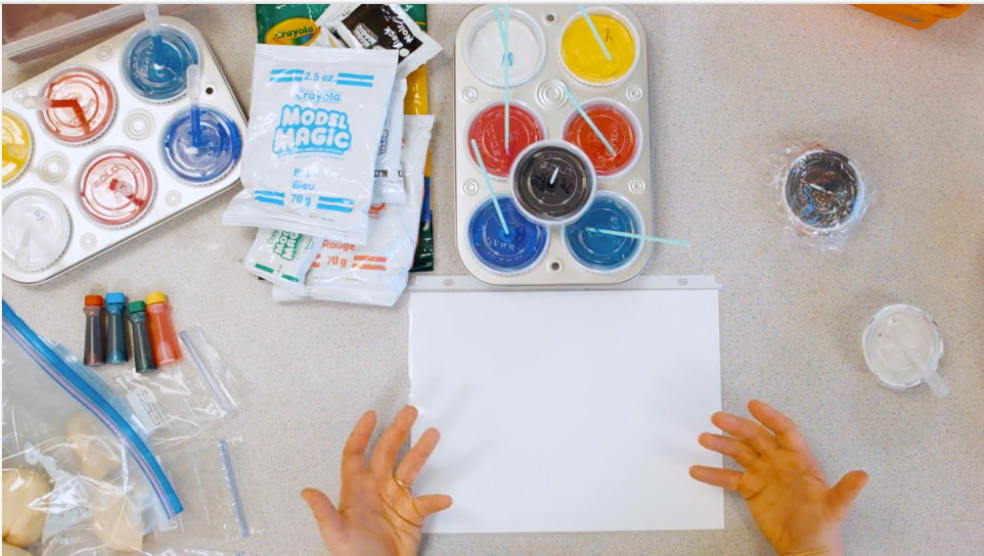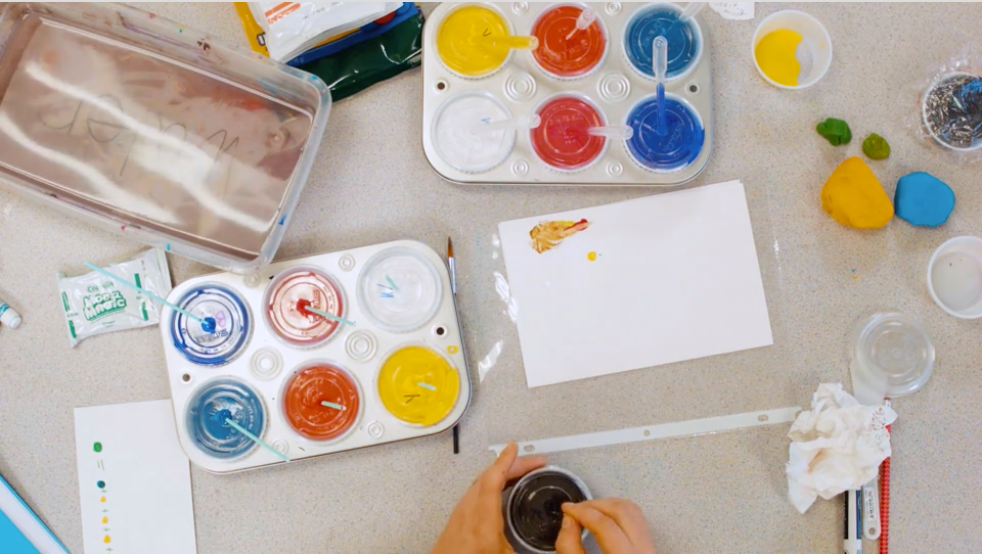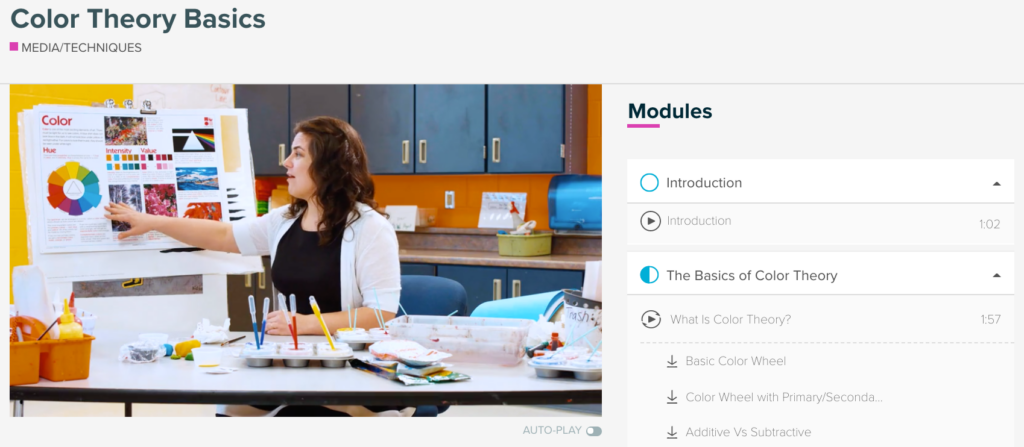For many students (and teachers), almost anything with the word “theory” causes us to press the snooze button. No matter how captivating the information is, if it is called a theory, it can come across as boring or stale. Such is the case with teaching color theory in the classroom. How many times have you showed students a color wheel and felt a little disappointed when their eyes did not start to twinkle? Sure, we art educators are all jazzed about color, but for some reason, if we try to just explain the wonder of color, it falls flat. But, how do we prevent the color wheel from being dry? Once students understand more about color, they can appropriately use color to express emotions and feelings in their artwork.
The truth is, to get students excited about color theory, we have to show them how color and emotion are intertwined. We have to get them to feel color.

Here are 3 ways to connect color and emotion:
1. Let students paint!
It may seem self-explanatory, but you should actually allow your students to experiment and paint while you introduce and teach the color wheel. Now, we know what you are thinking. What a mess! However, with some preparation and a few pre-selected materials, it will be much more manageable.
- First, give each student a plastic paper protector that is normally meant to be put in a binder. Then, put a plain white paper inside. This will be the re-usable surface for your students to experiment on.
- Put the primary colors (red, yellow, blue) in separate containers. Then, in each container, put a pencil (eraser side in the paint) to be used as the “dot.” The pencil eraser will act as a stamp to put a small amount of paint onto the plastic sheet. You could also use a straw or these cool foam-tipped swabs.
- Give each student a paintbrush and water. Then, instruct them step-by-step to add a dot of paint in the order you explain the color wheel. Using their paintbrush, they can mix the separated dots to see how the color wheel and the magic work! It also helps to give students paper towels to dry their brush and wipe off their experiments when finished.
By setting up color theory as a hands-on, non-permanent experiment, students will not only physically grasp how colors work together, but they will also be so excited to see the results. Their hands-on discoveries will positively impact their later encounters with color, and they can better use colors to portray certain aspects of their artwork.

2. Make color and emotion visible.
Another self-evident strategy is having color wheel examples—like this download—visible for students. Students need to see the wheel and be familiar with it before you start explaining it. Ask them how certain colors make them feel. Also, share a variety of examples of artworks that convey certain moods or emotions with their color with students. Show them Vincent Van Gogh’s Sunflowers, Pablo Picasso’s The Tragedy, or artworks with lots of colors like Jim Dine’s hearts.
3. Why the wheel?
Sure the colors look pretty all in a circle, but it is a wheel for a reason. Unless you explain this clearly to students, they will never fully understand why the wheel is the best way to organize colors and begin the discussion of color theory. As a tool, the color wheel makes everyone’s color life so much easier. We can reference complementary, analogous, primary, secondary colors. It allows us to know how to mix colors, especially neutrals—just mix two colors that are across from one another! The wheel is equivalent to a ruler. Sure, we might be able to guess what an inch is, but a ruler gives us a reference for accuracy. The color wheel takes the guesswork out of color. This kind of knowledge is empowering to students. Once they grasp this concept, they can really dig into how the colors make them feel.
To Learn More
If you’re interested in learning more about color theory and how to teach it in your art classroom, there are many great resources out there. Here are three other resources we recommend:

Color Theory Basics PRO Learning Pack
Learn more about color theory and how to make it accessible for your students from art teacher and color expert, Johanna Russell. In this Learning Pack, you will find the resources you need to set up your materials, scaffold your lessons, and design your instruction to best set up a successful color theory curriculum.
A Better Approach to Color Theory – Part 1 (Ep. 112) & Part 2 (Ep. 113)
In this two-part series, art teacher , Maggie Maggio, joins Tim to talk about why we should change our approach to teaching color. The discussion goes beyond the basics even for elementary students and gets our creative juices flowing!
A More Creative Way to Teach Color Theory
In this article, veteran art teacher, Debi West, gives a step-by-step guide to approach the color wheel in a whole new way, especially for secondary environments.
You, as an art teacher, know the magic and wonder of the color wheel and any so-called “theories” involved. It is your task, though, to get students on the color wheel bandwagon and encourage them to use it to better their own understanding and feeling of color to make their artmaking even more successful. After all, according to Wassily Kandinsky, “Color is a power which directly influences the soul.” With color, students can access and feel the rest of the knowledge and expression available to them.
How do you teach color theory in your classroom?
What about the color wheel makes color so accessible?
Magazine articles and podcasts are opinions of professional education contributors and do not necessarily represent the position of the Art of Education University (AOEU) or its academic offerings. Contributors use terms in the way they are most often talked about in the scope of their educational experiences.






